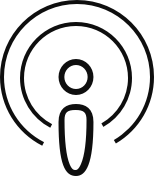I was scared to make the transition because I was ill-informed. I just didn’t know about the plans and services out there that could benefit me – and there are quite a few. Thanks to some research and the guidance of fellow freelancers and small business owners pointing me in the right place, I was able to build a benefits package of sorts for myself.
Benefits Advice for Self-Employed, A DIY Plan for Insurance
Running my own business has been one of the best and most rewarding decisions of my career.
But I almost didn’t take the leap.
I was frightened at first, unsure how to secure many of the benefits I’d grown accustomed to working for a company.
How will I save for retirement without the convenience of a 401(k)?
How will I be able to afford health, dental and vision care without my company’s insurance plan?
Will I be able to afford the time off to take a vacation?

I was scared to make the transition because I was ill-informed. I just didn’t know about the plans and services out there that could benefit me – and there are quite a few. Thanks to some research and the guidance of fellow freelancers and small business owners pointing me in the right place, I was able to build a benefits package of sorts for myself.
If you’re considering pivoting to self-employment, don’t let uncertainties over things like retirement planning and a vision plan stop you from pursuing your dreams. Here’s how I’ve been able to affordably craft my own benefits.
Medical Insurance
There are a number of ways you can secure health insurance when you are self-employed.
First, if you’ve recently left your job, you may qualify to keep your previous health insurance plan provided by your employer through COBRA, a federal program, for up to 18 months. This can be relatively pricey since you have to pay not just your portion of the cost, but also your employer’s, plus typically a 2 percent fee. Your employer usually sends you the election form within 30 days. You have another 60 days to apply. Coverage begins on the date of your last day or the date when your benefits end.
Alternatively, if your spouse or partner has health insurance from his or her employer, see if you can piggyback on that. (That’s what I do!)
Another route: Your state’s Marketplace. While the open-enrollment period is generally in the fall, if you lose your job at any point and expect to lose coverage in 60 days, you may be eligible for a “special enrollment period.” To learn more, visit HealthCare.gov or call 1-800-318-2596.
Finally, if you’re a member of a union, a professional organization or taking courses part-time at a local school, you may be able to get access to a more affordable, group health insurance.
If you’re reading this and you are younger than 26 years old and your parents have a health insurance policy, current law states that you may be able to be covered by their plan.
Medical plans often provide dental care as part of the plan or an add-on, but you can find separate dental plans at sites like eHealth, which surf the web for the top dental plans for your individual needs.
Vision Care
My father was a stickler (still is) about getting our eyes checked regularly. I remember going to see an optometrist as early as 6 years old and receiving glasses when I was 12 (that was a big day).
Excited to announce that I’m teaming up with VSP Individual Plans, which provides super affordable vision coverage that you can buy on your ownfor as little as $13 per month. It’s perfect for the self-employed and thanks to VSP, I was able to secure affordable (and fashionable!) glasses recently.
Their website provides a number of great tools including a savings calculator and a Plan Wizard. Check out GetVSPVision.com to learn more.
Retirement Savings
While you can no longer contribute to your company’s 401(k) retirement savings plan, there are still a few ways to continue saving up for the golden years when working for yourself.
You can still contribute to a Traditional or Roth Individual Retirement Account (IRA). These accounts are designed to help you save for retirement. Each allow you to make contributions up to $6,500 this year. In a traditional IRA, contributions are tax deductible today. In a Roth IRA, contributions are not tax deductible, but then withdrawals after age 59 ½ can be made tax-free.
If you’d like to save a lot more each year for retirement, then consider opening a SEP IRA, which stands for a Simplified Employee Pension IRA.
Your annual contribution in 2019 can be as much as $56,000 (or no more than 25 percent of your compensation.) And it is tax deductible!
Paid Leave
Being your own boss has many advantages but a paid vacation and paid family leave are not really among them. For these you’ll have to plan and save. As an entrepreneur, I’ve always said that it’s important to have an extra bigger savings account that can help to support you for up to one year in case of a slowdown in your business or if you want to just take a break from work – for personal, family or medical reasons.
Automatically saving at least 20 percent of your earnings in a high-yield savings account each month (or every time you get paid) can be a way to quickly shore up savings to better afford life’s ups and downs as a small business owner.
This article is sponsored by VSP Individual Vision Plans.


